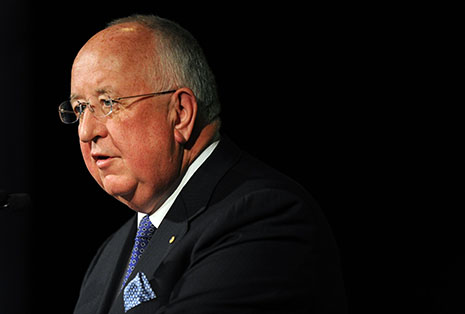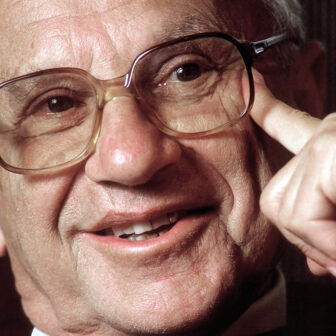ONE of the long-running stories in the business news has been the over-the-top pay received by top company executives. In the midst of the media coverage, in September 2012, the then chief executive of the world’s biggest mining company, Marius Kloppers of BHP Billiton, renounced his $4.5 million bonus, taking responsibility for some bad investment moves. The previous February the CEO of Rio Tinto, Tom Albanese, had renounced his bonus for the same reason (and in January 2013 he was given the boot).
Kloppers didn’t hurt too badly, however. Even without the bonus, what he got from BHP Billiton in the last financial year was calculated at $9.4 million, including shares given to him as incentives. Albanese’s successor, Sam Walsh, will start his new job with a total package of $7.8 million per year. Mr Kloppers took home about 200 times as much as the average worker in the Australian economy each year. The CEOs of the other top-fifty corporations in Australia take home about one hundred times the average wage.
Executive pay, even after the global financial crisis, is at historically high levels, all around the capitalist world. The ratio of CEO pay to average wages in the United States has multiplied by about twenty since the 1960s. There has been a sharp debate about this, especially in the United States, where the top CEO pay package in 2012 was $131 million and the next three were over $60 million. The public debate is whether such huge pay packages are justified, and the broad answer seems to be, no, they are not. But that doesn’t stop them being paid. Why have such huge amounts become entrenched, what exactly do they represent, and what are their effects?
Companies routinely defend the large pay cheques on the basis that “the market” demands – and a good executive’s “performance” deserves – generous remuneration. Rio Tinto, for instance, opens its executive remuneration report by saying: “Rio Tinto operates in global and local markets where it competes for a limited pool of talented executives.” Their elaborate justification for the huge incomes of top executives is worth reading in full.
In one sense, the appeal to the market is unanswerable. Yes, that level of pay is now the normal expectation among corporate executives. In another sense, it explains nothing. In a market economy, any state of affairs can be explained as being what the market demands, or what the market has delivered.
At the same time, the story is plainly untrue. If executive performance pay reflects the value of the executives’ work for the company, then what has made executives twenty times more productive since the 1960s? Are they twenty times better educated? Working twenty times as fast? Looked at this way, the explanation becomes absurd, and it’s clear that the companies themselves don’t really believe it. (In July 2012 Rio Tinto’s chairman, Jan du Plessis, actually announced that he didn’t believe it, complaining that executive pay was in an unsustainable “spiral.”)
Corporations don’t try to measure the individual productivity of executives and pay accordingly, because they know this can’t be done. The packages generally consist of a complex combination of base pay, bonuses and fringe benefits, and short- and long-term “incentives,” some in cash and some in shares. The variable parts of the package are tied to the collective outcomes of the company’s operations – earnings, cash flow, share price or growth, for example, or vague concepts of organisational change. That is to say, the packages reflect mainly other people’s work.
We can only begin to understand the issue if we drop the idea that executive pay is some kind of “wage” that can be explained as an exchange on a labour market. We need sociology to understand what is going on here, as well as economics: especially, the sociology of power.
It’s worth recalling the fabulous underlying productivity of the modern mass-production industrial economy. Its combination of skills, technology and organisation produces goods and services in tremendous volume. We support, without any real strain, growing millions of the retired, children and students, not to mention the Kardashians and the Windsors.
This massive output is the product of collective labour, an intricate web of cooperation and exchange on a social scale. Think, for instance, of what’s behind a functioning mobile phone. It is not just Telstra or Optus that sells the contract and sometimes provides the service. It is also the communication network they rest on, the government that allocates the spectrum and the legal system that guarantees the contracts, the banks that keep the phone companies solvent, the companies that manufacture the handsets, the R&D departments in the manufacturing companies, the universities behind the R&D departments, and so on. Interlocking webs of institutionalised collective labour like that are characteristic of the large-scale corporate economy.
There is no rational way of determining the value of any individual’s contribution to the output of such a large-scale, institutionalised, collective process. That conclusion was reached several decades ago by the German sociologist Claus Offe, and it’s basic to understanding modern economies. The distribution of income now is centrally a matter of social power.
We are familiar with cases where power is converted into wealth. The Suharto family in Indonesia made billions out of General Suharto’s military dictatorship, much as the Marcos family did in the Philippines. Over the past twenty years or so, the rulers of China have succeeded on a spectacular scale in turning a communist cadre into a corporate elite.
Corporate CEOs are not military dictators, but there is a structural similarity. Both groups have organisational power and the capacity to mobilise that power to extract large shares from the social process of production.
Here, it is important to think of executives as a group, and not be dazzled by conspicuous individuals such as Marius Kloppers. There is a group reality here, including the whole top echelon of managers (the people BHP rather misleadingly calls the “Group Management Committee”), and the company directors who are formally responsible for setting their pay levels. The long debate about the relation between managers and shareholders stretches back to the “managerial revolution” thesis of the 1940s: there is some difference of function, but in social terms, top corporate managers and directors are the same group.
Managers and directors have similar social origins, they work together in the same environment, and they have a common language and shared ideology. They are almost all men, they come overwhelmingly from the dominant ethnic group and the privileged class, they are educated in private schools and elite universities. Yes, there are also some upwardly mobile people among them, but they learn the way of life and the correct attitudes quickly. The executive packages in large corporations are, nowadays, carefully structured to align the interests of the executives with the shareholder interests that the directors officially represent.
UNDERSTANDING the high level of executive incomes, then, is mainly a matter of understanding changes in the power position of this group over the past thirty years or so; and secondly a matter of understanding how they use power. Some of the elements of this equation are reasonably clear.
As recently as the 1970s, two other groups constituted significant challenges to the corporate elite in Australia: unions (and their representatives in the Labor Party), and public sector officials. These countervailing powers worked through planning mechanisms, political mobilisation of the workforce and centralised wage fixing, and also through ideology, by presenting alternatives to market reasoning.
In the neoliberal politics of the last thirty years, the power of both these alternatives has been in steep decline. Their willingness to contest corporate interests and decisions has almost evaporated; as the federal government’s 2010 backdown over the mining super-profits tax vividly showed.
Increasingly, the managerial elite has been in the happy situation of facing no institutionalised social opposition. This is true across much of the capitalist world. Witness Washington’s response when the global financial crisis arrived: it acted quickly to shore up Wall Street, not to crack down on it. The contrast with the 1930s is striking.
Power is a matter of authority as well as organisational resources. The neoliberal era has seen important changes in public culture. There has been massive promotion of competitive individualism, a cult of “excellence,” a promotion of “rewards” for “achievement.” All this language tends to justify high incomes for a small elite, in sport and entertainment as well as management. This language has become so embedded in corporate life that it makes directors and managers paying each other very high incomes seem not just natural but a right and proper use of their power.
There have also been important changes in corporate organisation. It is now typical for corporations to be organised on a fractal logic. Each unit and sub-unit is treated as if it were a corporation in its own right, with distinct targets and budgets – and a structure of pay and bonuses that treats sub-managers as CEOs of their own little units. Ultimately, each individual employee is supposed to function like a firm, seeking to maximise individual income.
The very top corporate managers now sit on top of a tall tree of bonuses and incentives, which have become an institutionalised and expected part of income. (Board remuneration committees scrutinise “comparators,” and executive search firms compile the data.) Inside this world, it seems common sense that the top managers’ bonuses and incentives should be higher than all the rest. How could it be otherwise? That would be an insult to the most excellent.
There is also an effect of the “financialisation” of modern capitalism – the growth of finance capital, and its hegemony over the industrial and agricultural capital that ruled the roost in other eras.
The mind-boggling scale and reach of contemporary financial markets hasn’t exactly replaced other forms of economic activity – we still produce the goods and services. But it has changed the frame of reference for corporate elites. They now live in a world where gigantic profits are often made without any commitment to productive investment, and where financial operations constantly impinge on industrial, mining and trading corporations. Even inside corporations, the separation of control from operations has grown. The new head of Rio Tinto, Sam Walsh, made his mark by automating the firm’s iron ore operations in the Pilbara, locating the control rooms down in Perth. (And happily eliminating part of the Pilbara workforce.)
Inevitably the point of comparison for corporate managers shifts from their own businesses to the world of international finance. At the same time, the financialisation of the business world makes the elite packages, of which the larger part is almost always the bonuses and incentives rather than the simple salary, easier to pay and more normal in appearance.
These trends are not the whole explanation of the great rise in executive incomes, but they are a considerable part of it. The neoliberal era, almost everywhere in the world, has seen rising levels of economic inequality. In the developing world, neoliberalism has meant increased unemployment and massive growth in the informal economy. In rich countries there is some informalisation but also a sustained squeeze on welfare incomes (the removal of sole parents’ benefit is a recent Australian example). There are growing gaps in the wage structure, and a much less progressive tax system than a generation ago. Corporate executives are among the most spectacular beneficiaries of this society-wide process.
To put it in a nutshell, the corporate managers are not earning wages. Markets have little to do with it. They are building fortunes. Their organisational power enables them to claim a share of the expanding financialised capital in the modern economy, and convert part of that share into extremely high incomes. Within an environment of privilege, this claim becomes a matter of common sense and routine. And though there are many critics of the result – the anti-globalisation movement, the Occupy movement, and some of the unions – there is not at present any social force that has been able to reverse it. •




